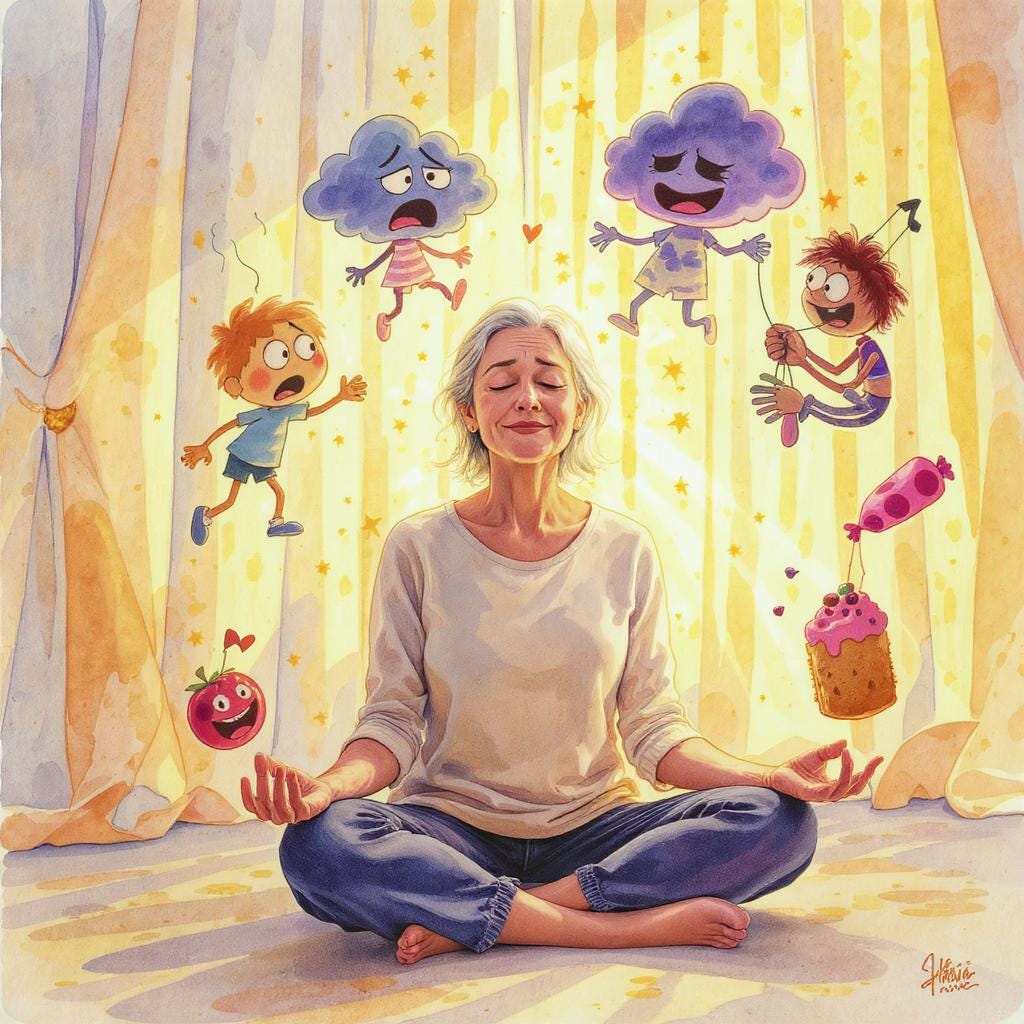The guiding characters of my mental health. Image created by author using DALLE-3.
Trigger warning: I am using personification to portray mental health conditions as internal “roommates,” serving as a metaphor for juggling life with various mental health diagnoses stemming from childhood abuse. I do not actually hear voices.
They moved in when I was young, before I knew to lock the door. I heard their whispered names: Olivia, Debi, Alexis, Edie in the mirror, and Paula at night. They were not strangers; they were the voices of my survival.
Hello. My name is Olivia.
My clinical name is Obsessive Compulsive Disorder, but I prefer Olivia; it sounds softer, friendlier. I’ve been a part of Shayla’s life for as long as she can remember. I am her best friend. Although she doesn’t always enjoy having me around, she has grown accustomed to my presence.
All the roommates gather around.
I’m not alone. There are others who live with Shayla, too.
There’s Edie, who represents Eating Disorders.
Debi, who stands for Depression.
Paula, short for PTSD.
And then there’s Alexis, who embodies Anxiety.
Alexis is our leader, the first to arrive, and the one who quietly welcomed the rest of us in. Together, we’ve been Shayla’s companions, her protectors, her unwanted yet familiar houseguests.
We don’t mean harm. In our own way, we’ve always tried to help. We take turns keeping her company, never wanting her to feel alone. Sometimes, a few of us show up at the same time when we sense she needs extra support.
Shayla doesn’t always see it that way, though. She gets overwhelmed by her life and wishes we’d leave. We know she feels suffocated by our presence. She sees us as intrusions on her life. She says we are just making things worse. That hurts our feelings. But she doesn’t understand that we came to protect her.
When Alexis shows up, bringing her anxiety in full force, Shayla cycles through fight, flight, freeze, or fawn. We quietly watch, guessing which response she’ll choose this time. These reactions are her way of surviving, coping, and functioning with the mental paralysis that envelopes her mind in times of stress. Each is another way of staying safe in a terror-filled world.
We moved in early, maybe from the day she was born. She was thrown into a world that was far too heavy for a little girl to carry alone. So we showed up and stayed.
When she was eight and life turned terrifying, we stepped in even stronger. We couldn’t bear to see her suffer alone.
That’s when I, Olivia, became especially active. Little girl Shayla didn’t know how to cope with the nightly abuse she faced. I gave her the inner drive to follow rituals. I even brought Edie in as my partner to add food restriction as another coping strategy.
These were simple rules meant to give Shayla some of her control back. If she performed them just right, nothing bad would happen. That’s what we told her. That’s what she believed. Of course, the truth is that those rituals didn’t actually prevent anything. However, they gave her hope and a sense of power in a world where she felt entirely powerless. That was, at least, something.
As she got older and her circumstances didn’t improve, we buckled in for the long haul. When she became a mother, Alexis amplified. Shayla was filled with anxiety. She was terrified she wouldn’t be a good mom, especially while navigating her husband’s alcoholism and continuous dishonesty.
Shayla’s first panic attack arrived with a fury while out driving one night. She froze, and her brain went blank. Through prayer, she made it back to the safety of her house, but she would never be the same; her sense of freedom was compromised.



